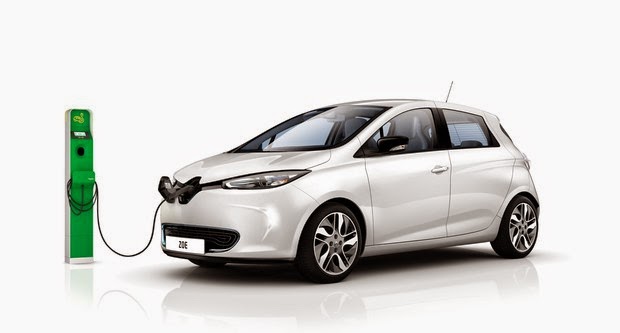Shai Agassi resigns from Better Place board following resignation from CEO post![]() and before that Shai Agassi steps down as CEO of Better Place as company enters new phase
and before that Shai Agassi steps down as CEO of Better Place as company enters new phase![]() : Shai Agassi, the founder of Better Place, suddenly resigns and while it’s initially said he’ll remain as a Board member, within a week he “resigns” from that post as well.
: Shai Agassi, the founder of Better Place, suddenly resigns and while it’s initially said he’ll remain as a Board member, within a week he “resigns” from that post as well.
Better Place, Tesla and Zero Motorcycles receive California Energy Commission grants![]() : A grant is given from the California Energy Commission to support an electric taxi demonstration project for the SF Bay Area. The taxi system will be in operation by 2013. By itself this is cool, but what was the head turner was a detail I found while researching this article. Coda and Better Place working on electric taxi system for SF Bay Area
: A grant is given from the California Energy Commission to support an electric taxi demonstration project for the SF Bay Area. The taxi system will be in operation by 2013. By itself this is cool, but what was the head turner was a detail I found while researching this article. Coda and Better Place working on electric taxi system for SF Bay Area![]() : For the taxi demonstration project, Coda Automotive is supplying the initial 6 cars rather than Renault. Of course Renault does not supply cars in the U.S. and Coda does, so perhaps it’s just a one-off deal?
: For the taxi demonstration project, Coda Automotive is supplying the initial 6 cars rather than Renault. Of course Renault does not supply cars in the U.S. and Coda does, so perhaps it’s just a one-off deal?
Renault ZOE crowned Best Green Car of the 2012 Paris Motor Show![]() : It’s cool for Renault their car was awarded an honor. The underplayed change with the ZOE is that while originally it was to use the Better Place quick battery swap system, it now does not do so. Instead the car has an on-board 43 kilowatt 3 phase AC fast charger that’s better than all other fast charging systems currently available.
: It’s cool for Renault their car was awarded an honor. The underplayed change with the ZOE is that while originally it was to use the Better Place quick battery swap system, it now does not do so. Instead the car has an on-board 43 kilowatt 3 phase AC fast charger that’s better than all other fast charging systems currently available.
The Caméléon charging system (see Renault’s 43 kilowatt fast charge system for ZOE and other electric cars![]() for details) supports a full range of charging rates from 3 kilowatt up to 400 volt 32 amp three phase AC at a 43 kilowatt charge rate. At the upper charge rate the ZOE can be recharged in 30 minutes. Driving range is 90 miles city driving, perhaps 60-70 highway.
for details) supports a full range of charging rates from 3 kilowatt up to 400 volt 32 amp three phase AC at a 43 kilowatt charge rate. At the upper charge rate the ZOE can be recharged in 30 minutes. Driving range is 90 miles city driving, perhaps 60-70 highway.
The fast charge system is robust enough that a pair of ZOE’s were run through an endurance race in June, and one of the two cars covered 1000 miles in 24 hours. This was accomplished by use of the fast charger, and 18 quick charges within 24 hours.
So far fast charging has required a huge off-board charging station that rectifies AC to DC inside a box the size of a large refrigerator![]() . This is required to support DC fast charging rates of between 50-100 kilowatts. The Caméléon charging unit is completely on-board the ZOE, and supports a 43 kilowatt three phase AC input.
. This is required to support DC fast charging rates of between 50-100 kilowatts. The Caméléon charging unit is completely on-board the ZOE, and supports a 43 kilowatt three phase AC input.
In other words, the ZOE is a diminutive little game changer in terms of what we expect is required to support fast charging on electric cars.
In short I’m guessing – and this is a wild ass guess that has no proof behind it, just conjecture based on the above factoids – that Renault does not need Better Place any longer. That Renault has realized it does not need Better Place. That the ZOE is being launched without discussing quick battery exchange stations (Better Place) is probably what caused the Better Place board to kick out Shai Agassi.
- Highway design could decrease death and injury risk, if “we” chose smarter designs - March 28, 2015
- GM really did trademark “range anxiety”, only later to abandon that mark - March 25, 2015
- US Government releases new regulations on hydraulic fracturing, that some call “toothless” - March 20, 2015
- Tesla Motors magic pill to solve range anxiety doesn’t quite instill range confidence - March 19, 2015
- Update on Galena IL oil train – 21 cars involved, which were the supposedly safer CP1232 design - March 7, 2015
- Another oil bomb train – why are they shipping crude oil by train? – Symptoms of fossil fuel addiction - March 6, 2015
- Chevron relinquishes fracking in Romania, as part of broader pull-out from Eastern European fracking operations - February 22, 2015
- Answer anti- electric car articles with truth and pride – truth outshines all distortions - February 19, 2015
- Apple taking big risk on developing a car? Please, Apple, don’t go there! - February 16, 2015
- Toyota, Nissan, Honda working on Japanese fuel cell infrastructure for Japanese government - February 12, 2015











